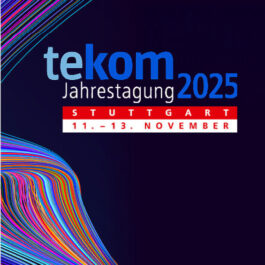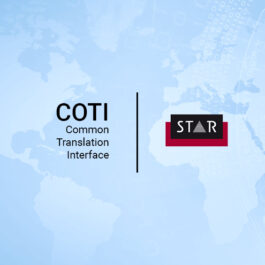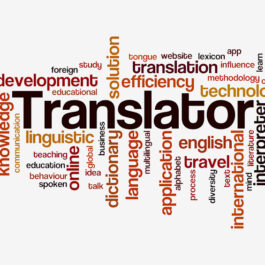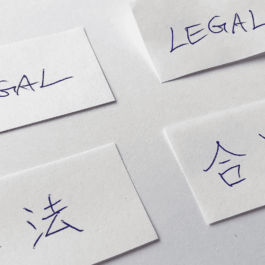As a professional language service provider, we encounter the challenges and subtleties of a wide variety of languages each and every day. One language that has been attracting more and more attention in recent years due to economic, cultural and political developments is Korean. Whether through K-pop, South Korean technology companies, or trade relations, interest in the Korean language is growing rapidly. But what makes Korean so special, especially when compared to English?
One of the most striking and complex features of the Korean language is the system of politeness and formality levels. This is where Korean differs fundamentally from English.
In Korean, the social status of the people you are speaking to must be taken into account at all times. These include:
- Age
- Professional position
- Familiarity/closeness with the person
- Social hierarchy
The appropriate politeness level must be selected for each situation. There are several levels, but the most common are:
- Informal (low register) (반말 / banmal) – used with friends, family and those with whom you have a close relationship, as well as with children.
- Polite (neutral) (존댓말 / jondaetmal) – the standard level of politeness used in most professional and everyday contexts.
- Formal (high register) (격식체 / gyeoksikche) – particularly polite, often used in presentations, and when communicating with customers or superiors.
While in modern English we only have one term for “you”, whether speaking to one person or a group of people, from commoners to kings, the Korean language is far more complex! The person’s status and demographic affects not only the personal pronoun, but even the entire sentence structure, vocabulary and verb conjugations, including suffix formation.
For example: The verb “to eat” in different levels of politeness:
- Informal: 먹어 (meogeo)
- Polite: 먹어요 (meogeoyo)
- Formal: 먹습니다 (meokseumnida)
- Honorific (e.g. showing respect towards elders): 드십니다 (deusimnida)
For companies communicating with Korean business partners, choosing the correct level of politeness is not only a linguistic issue, but also a cultural non-negotiable. An incorrect form of address can instantly come across as impolite or disrespectful.
There are also important differences in non-verbal communication: While people in the Anglosphere greet each other with a handshake or a hug, in Korea, the bow is used as a sign of respect.
So, these distinct levels of politeness are not to be taken lightly and once again clearly demonstrate that language is often a mirror of society.
Alphabet and writing system: “Hangul” – simple and ingenious
One of the most fundamental differences between English and Korean is the alphabet. While English is based on the Latin alphabet, Korean uses the so-called “Hangul” or “Hangeul” (한글) alphabet. This writing system was introduced in the 15th century by King Sejong the Great in order to facilitate the general population’s access to the written language, with great success.
Hangul consists of 14 consonants and 10 vowels, which are combined into syllable blocks. This results in a system that is both easy to learn and extremely effective. In contrast to English spelling, which often appears haphazard (compare “cough”, “through” and “bough”, for example), Hangul is largely phonetic: In most cases, the words are pronounced exactly as they are written.
For our work as a language service provider, and also for the many people in Europe who are learning Korean, this means that deciphering Korean characters is not a major hurdle compared to many other non-Latin writing systems. Nevertheless, the correct translation and interpretation depends on the context – especially when it comes to the politeness levels.

A tricky number system – “Hangul” vs. “Hanja”
When “Hangul” was declared the official language of Korea, it replaced the previously used language and writing system, called “Hanja”. Hanja uses Chinese characters and pronunciation to express the Korean language. It was mainly used in academic circles, and Sino-Korean characters can still be found in official documents, such as those used to pass laws. Hangul was mainly spoken by the lower classes and women at that time, who often did not enjoy the education of the upper classes and intellectuals, who favoured Hanja. When Korea was annexed by the Japanese Empire (1910–1945), Hangul temporarily dropped out of favour, with the Japanese imposing their own language and culture.

As a result, Japanese influences can be found alongside Chinese in the Korean language today, and Hanja continues to be an important building block. There are two number systems in Korea, the “pure” Korean number system and the Sino-Korean number system. For example, when taking a photo of someone, you would count in Hangul: “hana, dul, set!”. To arrange an exact time for a meeting, you would use the Sino-Korean numerical unit for the minutes, but give the hours in Hangul: 12:30 would be “yeol-du” (12; pure Korean) “shi” (hour) “sam-ship” (30; Sino-Korean) “bun” (minute). So, Hanja is still an integral part of the Korean language. And it gets even better. If you want to order one bowl of “bulgogi”, for example, a classic Korean meat dish, you must use the pure Korean numerical unit. When ordering two portions of “tteogbokki” – a popular Korean snack made from rice cakes – you must switch back to the Sino-Korean numerical unit. This can get pretty confusing!
Another point of focus – sentence structure, grammar & spelling
A fundamental difference from English lies in the sentence structure. While English usually follows a subject-verb-object pattern (e.g. “I see the dog”), Korean typically uses the subject-object-verb structure (e.g. “I the dog see” – 나는 개를 본다).
In addition, there are no articles in Korean, which means a lot of information in Korean is implicit and depends on the context. For translators, this requires a thorough understanding of both languages in order to achieve coherent results, both culturally and in terms of content.
In principle, male and female pronouns do exist, but apart from a few exceptions, such as in antiquated poetry, they are rarely used. Consequently, you must always pay close attention to the subject in Korean. Once a name is mentioned, it can be assumed that the person will also be the subject of the sentences that follow.
As a logical consequence of the fact that pronouns are not specifically labelled as masculine or feminine, unlike in English, there is no gender debate, at least not a linguistic one. Instead, context and social factors are used to signal gender and other social roles.
Furthermore, Korean verbs and nouns do not have a grammatical number. Whether something is singular or plural is simply not considered that important in Korean; the plural is only used explicitly if this is important in a given situation and should be emphasised.
It is hard to imagine the English language without agreement between the nouns, pronouns and verbs to indicate number!
Vocabulary and loan words – old and new combined
The Korean vocabulary combines native terms, Sino-Korean words (borrowed from Chinese) and modern loan words, mainly from English. Just like English, words in Korean have varied origins.
There is one difference: Many loan words are phonetically adapted in Korean – for example, “computer” becomes 컴퓨터 (keompyuteo). And everyday terms such as 커피 (keopi) for “coffee” or 핸드폰 (haendeupon) for “mobile phone” (“hand-phone”), are also common.
For professional translations, it is essential to know the origin and usage of a term. Especially in technical, legal or medical texts, seemingly small differences can instantly make a big difference in meaning.

Context is everything – subject and object are overrated
Another difference to English is the importance of context-based communication. In Korean sentences, the subject or object is often simply omitted if this is clear from the context.
For example:
- “I’m eating now” – 이제 먹어요 (ije meogeoyo), literally: “Now eating.”
- “Do you like coffee?” – 커피 좋아해요? (keopi joahaeyo?), literally: “Coffee like?”
In English, such constructions would immediately be perceived as incomplete. In Korean, on the other hand, they are considered completely natural. This type of communication requires a keen sense of the cultural and situational context when translating.
In summary: Korean – more than just a language
Korean is a deeply expressive language with a distinctive writing system. Anyone who learns the language, which is spoken by more than 81 million native speakers, will also gain a deep insight into the culture, history and traditions of the country. The differences to English range from grammar and sentence structure to its distinct layers of politeness.
For language service providers and companies with business relations to Korea, this means that successful translations and language training not only require in-depth linguistic knowledge, but also intercultural expertise.
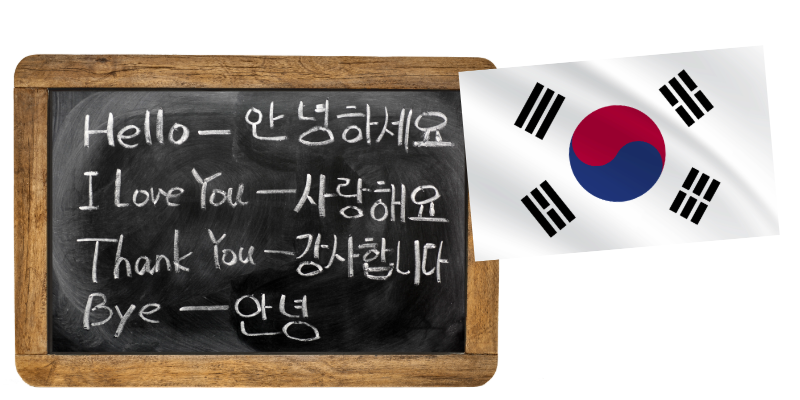
We are happy to support you in your professional context – simply get in touch!


